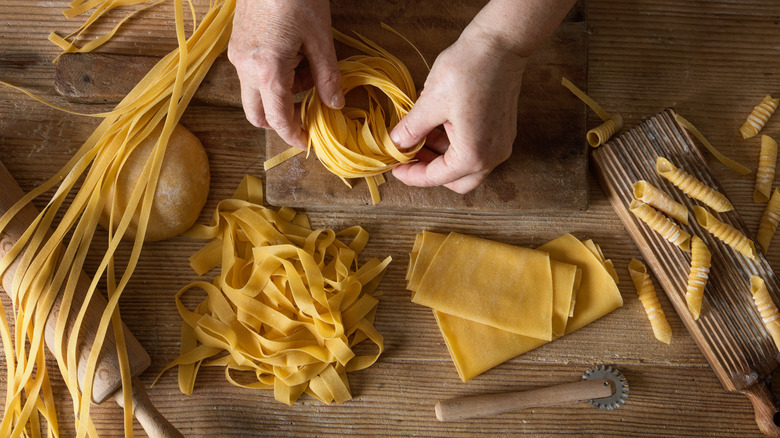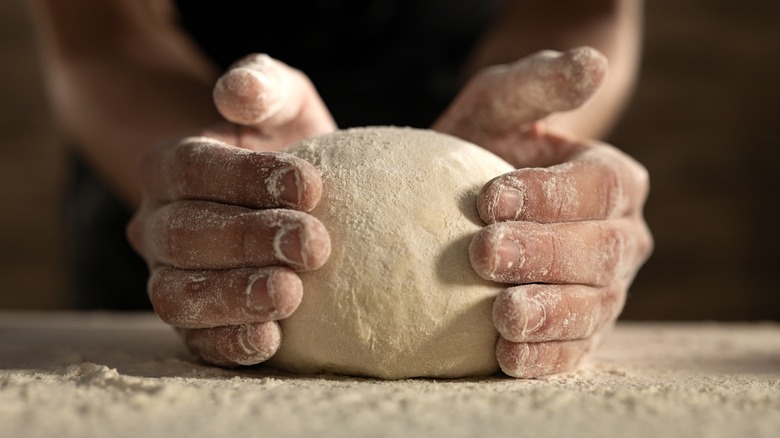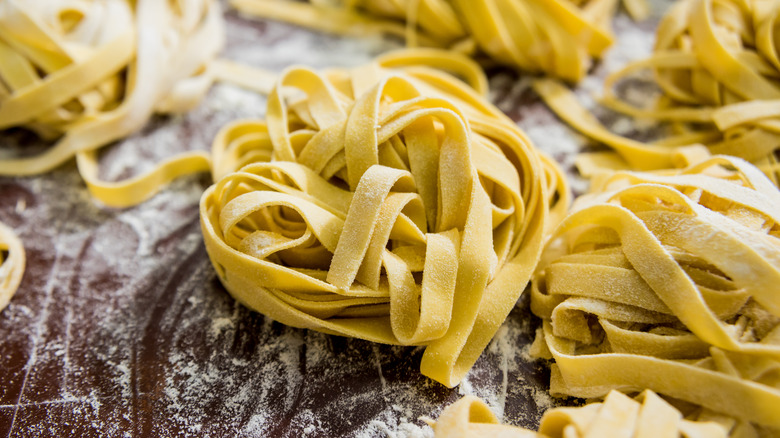How To Store Fresh Pasta In The Freezer
Whether you prefer fresh pasta made with semolina flour and water, or egg pasta, or perhaps potato gnocchi, once you make pasta from scratch a few times you'll realize how easy of a process it actually is — and you may never want to go back to store-bought or dried noodles again.
The thing about fresh pasta is that it's fresh for a reason; it has a very short shelf-life and is best consumed either day-of or within 18-24 hours of making the dough. The good news is that it freezes well, so you can stock up each time you make a batch.
You can go about freezing fresh pasta in two ways: Either freeze the dough itself, or shape the noodles first and freeze those. In either case, you'll end up storing the noodles in an airtight container or freezer bag, but the process of how to freeze, how long it will keep for, and how to thaw and cook it will depend on what form it takes.
Freezing, storing, thawing, and cooking fresh pasta dough
If you're freezing a batch of fresh pasta dough before you do any cutting or shaping of the noodles, it'll typically remain in good condition for up to four weeks in the freezer. All you need to do is form it into a ball or slightly flattened disc, wrap it tightly in plastic wrap, and cover with a freezer bag or airtight container for extra protection from freezer burn.
Regardless of how large your dough is, the best way to thaw it is to take it out of the freezer and let it sit in the fridge overnight. Once the dough is thawed and pliable, you can proceed as you normally would to shape your noodles.
From there, cook your fresh pasta in a pot of boiling, properly salted water for just a few minutes, until the noodles rise to the surface. And remember that fresh pasta is best eaten the same day you make it, so shape and cook your pasta immediately for the best, freshest results.
The process is different for storing shaped noodles
If you're freezing individual noodles after you've shaped the fresh pasta, these will last even longer in the freezer — typically for up to eight months. The first step is an important one: Be sure to dust the noodles with flour to prevent them from sticking to each other. Then, depending on the shape, you can either lay them out in a single layer or wrap small handfuls around each other into loose nests.
It's best to let the noodles air dry a bit, for about an hour or so, before fully freezing them. To do this, lay them out on a baking sheet or clean towel until they're semi-dry and easier to handle. Then you can transfer and store the noodles in an airtight bag or container.
The best part is that frozen noodles don't need to thaw at all — in fact, it's better if you cook directly from the freezer so that you don't affect the texture. To cook the pasta, simply remove from the freezer and place into boiling salted water (you may just need to cook for an extra minute or two).



